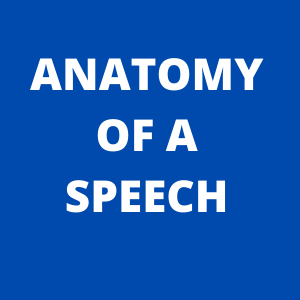With much of the nation still reeling from the 9/11 attacks, President George W. Bush went to Ground Zero on Sept. 14, 2001, and delivered one of the most dramatic impromptu speeches ever given by a leader. What has become known as “the Bullhorn Speech” and the imagery of that moment are iconic — but it certainly didn’t start that way.
As Bush began his speech, things weren’t going well logistically. It was difficult for most in the audience of Ground Zero workers to see or hear the president, and that can be disastrous for any public speaker.
 A fireman standing atop a burned-out firetruck in the rubble from the Twin Towers offered a hand up to Bush so that he could get elevated enough for his audience of Ground Zero workers to see him. Bush began to speak again, but some still couldn’t hear him, and those who could hear him didn’t seem particularly moved by the prepared remarks he was trying to deliver.
A fireman standing atop a burned-out firetruck in the rubble from the Twin Towers offered a hand up to Bush so that he could get elevated enough for his audience of Ground Zero workers to see him. Bush began to speak again, but some still couldn’t hear him, and those who could hear him didn’t seem particularly moved by the prepared remarks he was trying to deliver.
And then, Bush did something extraordinary that all speakers can learn from – he adjusted his message to fit the needs of his audience.
“We can’t hear you,” someone in the distance had just yelled. That’s when Bush departed from his prepared remarks. He went authentic. He went impromptu. “I can hear you, the rest of the world hears you, and the people who knocked these buildings down will hear all of us soon.” The crowd burst into cheers and then began chanting “USA, USA, USA!”
Although his words were an impromptu reaction to the audience, the speech structure he used wasn’t. He used the “Power of Three” technique, with each phrase building to a crescendo: (1) I can hear you. (2) The world can hear you. (3) And soon, the bad guys are going to hear from all of us. 1-2-3 — pow! Even when you are speaking impromptu, you can employ tried and true speech techniques to add a powerful punch to your message.
When the initial chanting had subsided, Bush continued with some of his prepared remarks. At one point, someone in the audience yelled, “God bless America!” Bush, now in complete solidarity with the audience, picked up on the phrase and used it to conclude his remarks, again using the “Power of Three” technique. “Thank you for your hard work. Thank you for making the nation proud, and may God bless America.” The crowd again burst into chants of “USA, USA, USA!”
Another speech technique Bush employed was allowing the audience to voice its approval. When the crowd roared, Bush went silent; he didn’t try to yell over them. A good speech rule to follow is: don’t step on your own applause. Talking over your audience makes it hard for them to hear you and, more importantly, it robs the audience of an important emotional moment.
Throughout the speech, Bush didn’t, scream or overuse bravado. He did speak into the bullhorn louder but in a determined, controlled tone. He didn’t need a long speech to connect with his audience or convey the message that he was trying to deliver. Bush said the right words, in the right tone, at the right time and that’s what made this a great speech.
Many believe the Bullhorn Speech was the moment that the nation transformed from grief to resolve; a resolve to take the fight to the terrorists and avenge the attacks. Had Bush stuck to his prepared remarks and had he not pivoted to the needs of his audience, that moment wouldn’t have come on that day. Watch this short video of the actual event and note how the audience responds.
Here are the simple but powerful lessons public speakers and business presenters can learn from the Bullhorn Speech: Be seen. Be heard. Be authentic. Use powerful speech formulas and techniques even when speaking impromptu. And always, always, always, make your message about your audience.


